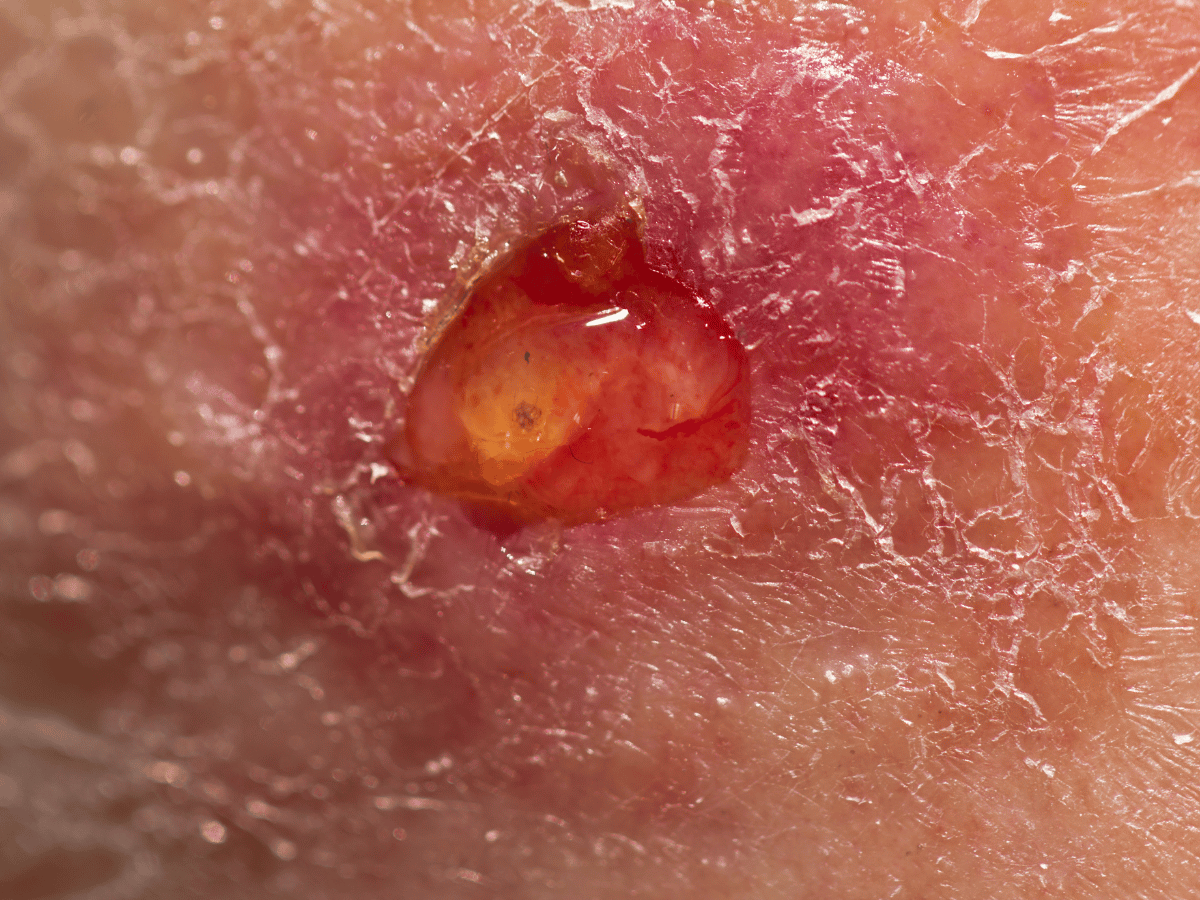
Venous leg ulcers, often abbreviated as VLUs, are chronic, often painful wounds that develop on the lower legs due to poor blood circulation in the veins. These ulcers are typically found near the ankles and can take weeks or months to heal, sometimes even longer if not treated properly. At their core, they represent the skin’s breakdown after long-standing pressure and fluid buildup caused by malfunctioning leg veins.
We often see these ulcers in individuals, especially over the age of 65, who have a history of conditions like deep vein thrombosis or chronic venous insufficiency. These aren’t just irritating wounds, they can be life-altering if not addressed in time.
At the root of nearly all VLUs is chronic venous insufficiency (CVI). When vein valves in the legs fail, they stop channeling blood efficiently back to the heart. Blood pools in the lower extremities, increasing venous pressure. Over time, this pressure damages the skin and surrounding tissue, making way for ulcers to form.
But CVI isn’t working alone. Here are some other key risk factors:
Venous leg ulcers don’t just appear overnight. Often, they’re preceded by telltale symptoms we can watch for, including:
Infection is common in VLUs. If the wound becomes foul-smelling, intensely red, or oozes pus, it’s time to see a physician promptly.
We start with a good physical exam, looking at the wound, understanding your symptoms, and taking a detailed health history. However, nothing rivals the duplex ultrasound when it comes to diagnosing these ulcers. It allows us to view blood flow within leg veins and confirm venous reflux.
Other diagnostic tools may include:
It’s crucial we rule out other ulcer types like arterial, neuropathic (from diabetes), or pressure ulcers since each has different treatment pathways.
Treating venous leg ulcers effectively often requires a coordinated, multidisciplinary effort. At the core of managing VLUs is this threefold approach: improving blood flow, managing the wound, and preventing recurrence.
Here’s how we treat them:
Compression therapy is hands down the gold standard in VLU management. Elastic bandages or graduated compression stockings apply measured pressure to the leg, reducing swelling and improving venous return.
In fact, with consistent use, compression therapy can reduce healing time by 30–50%. We emphasize education at SFL, patients need to know how to apply stockings correctly and wear them daily, even after the ulcer heals, to prevent recurrence.
One of the most powerful tools in our arsenal is prevention. And it starts with behavior. A few changes can go a long way:
For those already diagnosed with CVI or a past VLU, continued use of prescribed compression garments is essential.
VLUs affect more than just the skin, they impair mobility, disturb sleep, and sometimes lead to isolation and depression. That’s why our care plans address the physical and emotional toll together.
With the right care, patients regain not just mobility but confidence.
Don’t let a small spot or sore become something unmanageable. Usual warning signs include:
These signs could indicate infection, arterial involvement, or a different, more serious underlying condition.
We’re in an exciting era for wound care research. New frontiers in VLU treatment include:
Ongoing clinical trials such as those listed through the NIH or Wound Healing Society continue to improve outcomes, reduce healing time, and lower recurrence rates.
If you or a loved one are experiencing symptoms of venous leg ulcers, don’t wait. These wounds can become serious quickly without proper treatment. At South Florida Multispecialty Hospital, our vascular specialists and wound care teams are ready to help you return to a more comfortable, active life. Contact us today for expert care designed just for you.
VLUs are chronic sores that form due to poor blood circulation in the veins of the leg. They typically develop when vein valves fail, causing blood to pool and damage surrounding skin tissue, eventually leading to ulceration.
Those aged 65 and older, people with a history of DVT or leg trauma, individuals with chronic venous insufficiency, obesity, sedentary lifestyles, or occupations that require prolonged standing are most at risk.
Symptoms include ankle or lower leg swelling, pain or aching, skin discoloration, visible open wound near the ankles, and possibly fluid discharge or infection signs.
Diagnosis involves a physical examination, patient history, and imaging studies, most notably duplex ultrasound, to assess venous flow and confirm chronic venous insufficiency.
Compression therapy improves blood circulation by applying pressure to the legs, reducing swelling and speeding up healing. It’s considered the first line of treatment for most patients.
Yes. Regular leg elevation, wearing compression stockings, maintaining a healthy weight, staying active, avoiding smoking, and not standing or sitting for prolonged periods all help prevent VLUs.
With proper treatment, many VLUs can heal. Preventing recurrence involves ongoing use of compression therapy, managing chronic conditions, and making long-term lifestyle changes.
Seek medical help if you notice persistent swelling, skin changes, or a slow-healing sore near your ankle. Treatments range from wound care and compression to surgical procedures in complex cases.
Your well-being is our top priority. Reach out today to discover how our dedicated team can support your health journey.
Have questions or want to learn more? Use the form below to get started!
Connect with South Florida’s trusted multispecialty care team and take control of your health with compassion and convenience.
©2025 South Florida Multispecialty Medical Group. All Rights Reserved.